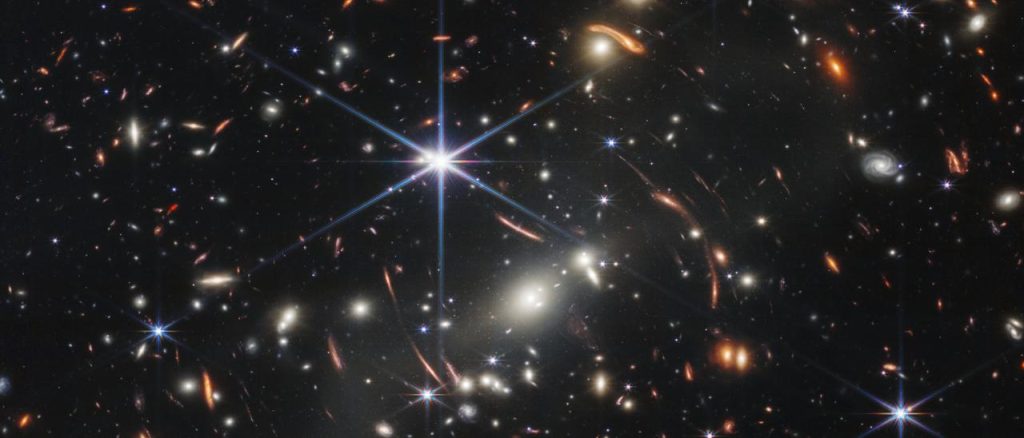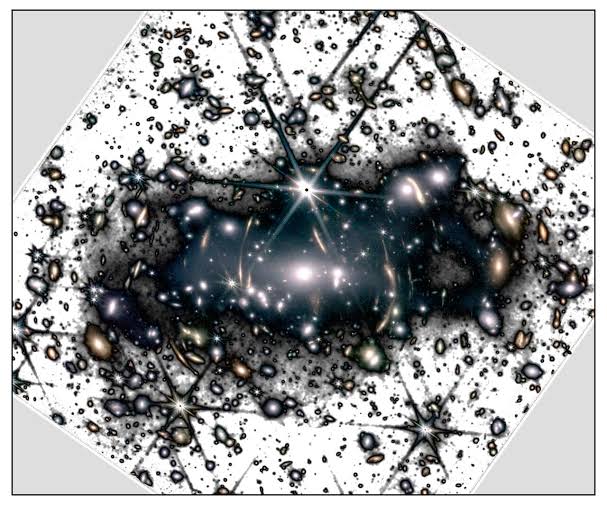There are some stars in galaxy clusters that stray into intergalactic space as a result of the powerful tidal forces created by the galaxies in the cluster.
These stars produce a very faint light known as intracluster light (ICL), which is what they emit. The darkest sky we can see from Earth has a brightness that is less than 1% that of it. This is one of the reasons why photographs captured from space are excellent tools for studying it.
The Observation Of SMACS-J0723.3-7327
Compared to visible light, infrared wavelengths provide us a new perspective on galaxy clusters. Mireia Montes and Ignacio Trujillo of the IAC have been able to examine the intracluster light from SMACS-J0723.3-7327 with an unheard-before level of detail because of the JWST’s efficiency at infrared wavelengths and the quality of its photographs. In actuality, the JWST’s images of the cluster’s center have twice the depth of the earlier Hubble Space Telescope images.
According to Mireia Montes, the study’s first author, “In this study we illustrate the huge potential of JWST for monitoring an object which is so faint.” We will be able to examine galaxy clusters that are considerably farther away and in greater detail thanks to this, she continues.
The New Techniques To Observe These Faint Light
In addition to needing the observational capability of the new space telescope to analyze this incredibly faint “ghostly” light, the researchers have created new analysis techniques that advance upon current methodologies. “As the intracluster light is a faint and extended structure, we had to perform some additional processing on the JWST photos in order to investigate it. To prevent biases in our measurements, this was crucial “remarks Mireia.

The data collected has allowed the researchers to demonstrate the intracluster light’s potential for studying and comprehending the processes involved in the formation of structures as massive as galaxy clusters. The cluster’s outer parts are the result of the accretion of galaxies similar to our Milky Way, she adds, while the cluster’s inner parts are formed by the merger of massive galaxies.
Conclusion
But in addition to providing information on how galaxy clusters originate, these data also provide light on the characteristics of dark matter, a puzzling element of our universe. Intracluster light is an excellent indicator of the distribution of dark matter in these systems because the stars that emit it follow the gravitational field of the cluster.
Ignacio Trujillo, the article’s second author, says, “The JWST will allow us to characterize the distribution of the dark matter in these enormous structures with unprecedented precision, and shed light on its basic nature.
